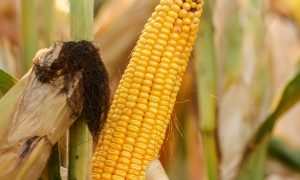After kharif crop failure, undivided Dharwad district in Karnataka staring at rabi loss

After scanty rainfall caused extensive damage to kharif crops, farmers now fear the drought situation will affect rabi cultivation more severely in Dharwad, Gadag and Haveri districts, where most farmlands are rain-fed areas.
A large number of farmers are anxious about the rabi season which has already started, as rains required for maintaining moisture in the soil for the second crop seem unlikely.
Green gram and maize form the major chunk of kharif crops in the undivided Dharwad district, along with cotton and soybean. Drought has forced several farmers to clear withered green gram plants and maize plants with green leaves but no yield. Though farmers are hoping for some rain to help the sowing of Bengal gram, wheat, jowar, safflower and other rabi crops in a few weeks, the situation seems to be worsening, casting a shadow on the rabi season too.
“I planted green gram on 10 acres of land in the first half of June. I had to destroy the plants now, as they are totally dried up. I had spent over Rs 15,000 per acre. Rains came in July, but a dry August spoiled everything,” says Gangadhar Badnikai, a farmer at Kusugal village in Dharwad district. He now intends to borrow money to sow crops for the rabi season.
Farmers are destroying their green gram plants in Gajendragad taluk of Gadag district, maize plants in Laxmeshwar taluk of Gadag district, as well as Shiggaon and Rattihalli taluks of Haveri district. “We were in tears while destroying the maize plants we had grown,” says Gadigeppa Harijan of Suranagi village in Laxmeshwar taluk.
















